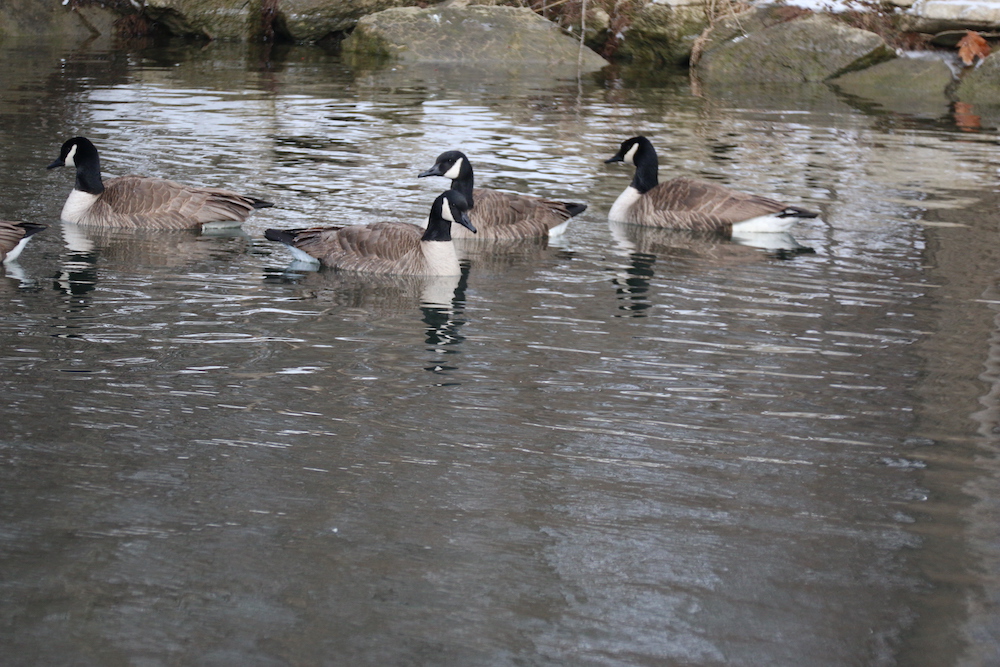
Exploring the Rich Biodiversity of Ohio’s Wetlands: Highlights from Spring 2021
Ohio’s wetlands are a vibrant part of our natural landscape, supporting unique species, improving water quality, and providing a crucial connection to nature for Ohioans. In the Spring 2021 Ohio Wetlands Association (OWA) newsletter, we explore the latest updates on wetland conservation, the importance of vernal pools, and community-led initiatives like H2Ohio. Here’s a look at some of the newsletter’s most captivating stories.
In Praise of Vernal Pools
Vernal pools—seasonal bodies of water found in Ohio’s forests—are invaluable habitats for many amphibians, insects, and plants. Dave Orndorf, a lifelong outdoor enthusiast, reflects on his experiences exploring vernal pools on his property in Delaware County. Filled with salamanders, fairy shrimp, wood frogs, and other fascinating creatures, these pools are small but essential ecosystems. Orndorf’s journey to preserve his land through a conservation easement is a testament to how individuals can contribute to the protection of these unique habitats.
H2Ohio Continues to Thrive
Ohio’s H2Ohio program, championed by Governor Mike DeWine, is making strides in improving water quality across the state. This comprehensive initiative addresses water pollution through wetland creation, wastewater improvements, and funding for local farmers who implement nutrient management practices. To date, H2Ohio has made substantial investments in wetland restoration, especially in the Lake Erie Basin, which faces significant nutrient runoff challenges. The program’s continued expansion promises to benefit Ohio’s wetlands and waterways for years to come.
Assessing Nutrient Removal in H2Ohio Wetlands
A vital part of H2Ohio’s work is the ability of wetlands to filter excess nutrients from Ohio’s water systems. Researchers from the Lake Erie & Aquatic Research Network (LEARN) are developing protocols to assess nutrient reduction in newly created wetlands. By analyzing wetlands’ capacity to remove phosphorus and nitrogen, the team hopes to create a robust monitoring system that will guide future projects. This data will help highlight the role of wetlands in combating harmful algal blooms and maintaining healthy ecosystems in Ohio.
Wonderment: A Naturalist’s Perspective on Youth Engagement
The pandemic may have temporarily paused school field trips, but it hasn’t diminished the magic of wetlands. Liz Neroni, an OWA volunteer, shares her experiences introducing young students to the wonders of wetlands. Whether it’s teaching them about dragonfly nymphs or listening to the “wow” of children discovering new species, these educational moments cultivate a lifelong love for nature in future generations. Neroni emphasizes the joy of exploring wetlands with kids and the value of hands-on learning.
Economics of Biodiversity: The Financial Value of Conservation
Ray Stewart dives into the economics of biodiversity, exploring how wetlands contribute to Ohio’s economy. The recent Dasgupta Review, published on World Wetlands Day, emphasizes that ecosystems like wetlands should be viewed as assets that provide essential services, such as water filtration and carbon sequestration. Stewart discusses how Ohio’s wetlands contribute to cleaner water, better air quality, and resilience against climate change, all of which bring significant economic value.
Young Explorers and the Magic of Vernal Pools
For naturalists like Robin Mayes, sharing the thrill of finding salamanders in vernal pools with children is priceless. Her story recounts an outing with her young grandchildren, showing them how to explore nature and observe Ohio’s unique wetland ecosystems. From spring peepers to chorus frogs, Mayes captures the joy of passing on a love for nature to the next generation and encourages families to explore the natural world together, even if it’s only their backyard.
A Story of Landowner Generosity and Wetland Preservation
The importance of landowners in conservation efforts cannot be overstated. Former Crawford Park District Director Bill Fisher exemplifies this spirit by sponsoring OWA memberships for three Ohio landowners who donated portions of their land for wetland preservation. These contributions help protect Ohio’s delicate ecosystems and inspire others to consider conservation options for their land. Fisher’s story underscores the impact of community support in sustaining Ohio’s wetlands.
These inspiring stories showcase the Ohio Wetlands Association’s commitment to protecting and enhancing Ohio’s wetlands through conservation, community partnerships, and education. Whether you’re a seasoned conservationist or new to wetland preservation, consider exploring Ohio’s wetlands, supporting local conservation efforts, and learning more about how you can make a difference.
For more information, visit www.OHwetlands.org and join the Ohio Wetlands Association to stay updated on their latest initiatives.